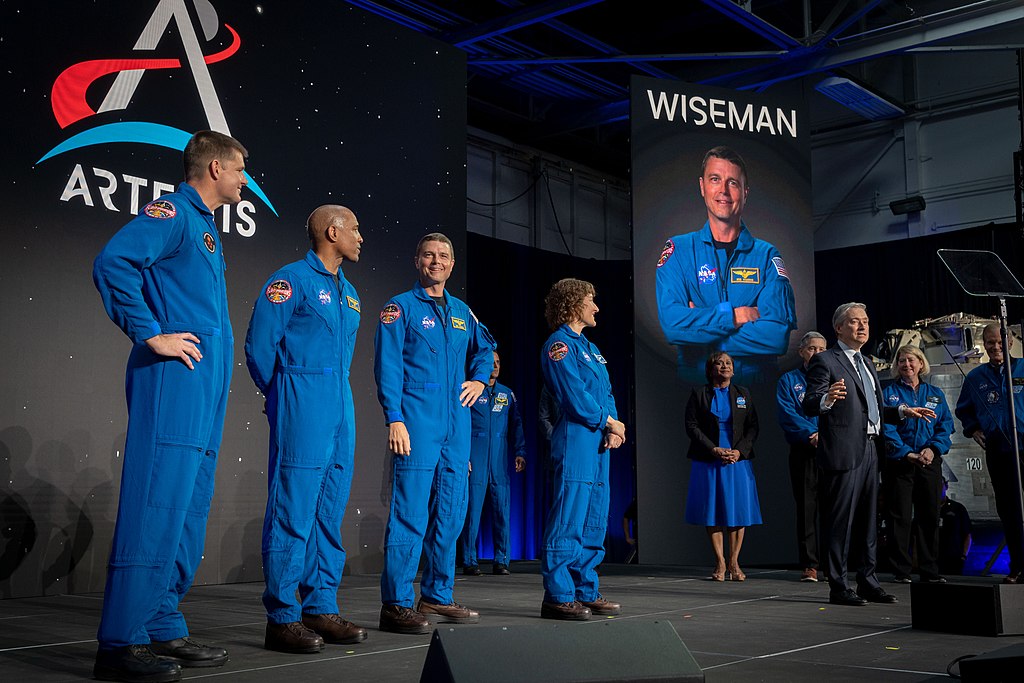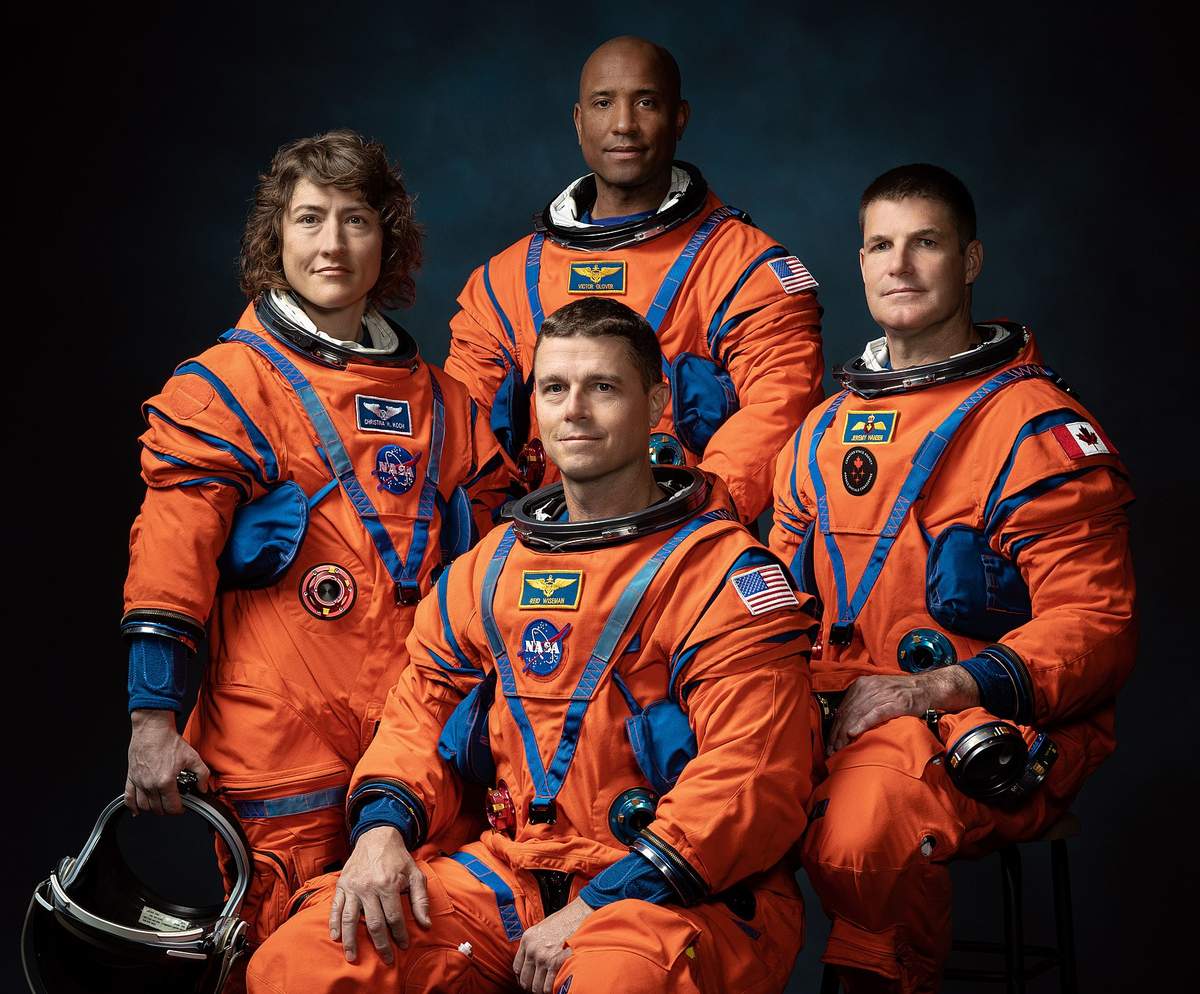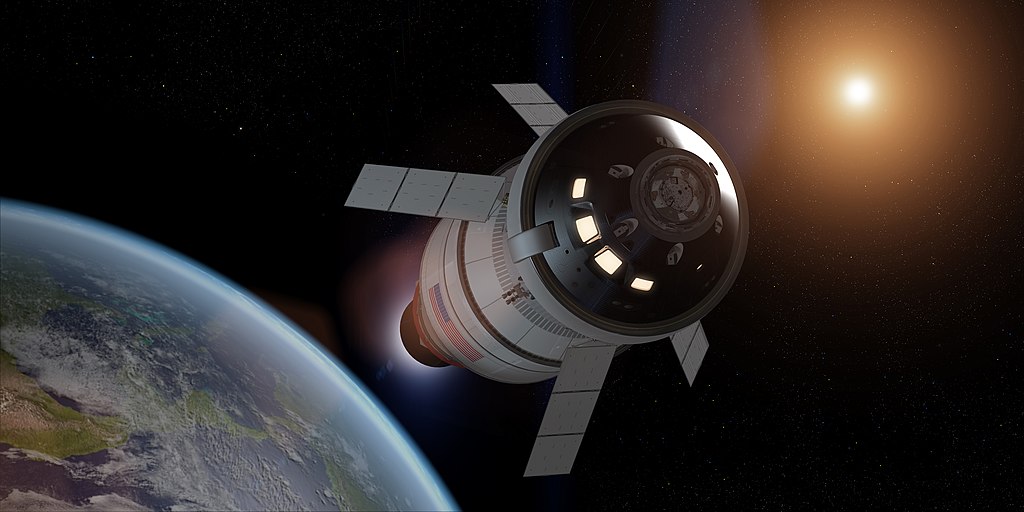In early April, NASA announced the names of the four astronauts who will become the first people in over 50 years to go to the moon. NASA’s Artemis II mission is set to take the astronauts on a trip around the moon in late 2024 or early 2025.
The space agency’s last mission to the moon was in 1972. Since then, no NASA astronauts have gone into deep space. Most missions have been to the International Space Station, which is in a low orbit above the Earth.
But in recent years, NASA has been working hard on its Artemis project, which is designed to send humans back to the moon. One day, NASA even hopes to send astronauts to Mars. The Artemis project is led by the US, but NASA has many international partners. Over 24 countries have signed agreements to take part in the project.

(Source: Bill Stafford/NASA [Public domain], via Wikimedia Commons.)
Last year, NASA successfully sent its Artemis I mission on a test flight around the moon. No astronauts were on board that flight, but the mission helped NASA test its plans and equipment.
The next stage in the project is Artemis II, which will send astronauts on a similar trip around the moon. Most of the crew members announced on April 3 are experienced astronauts. Reid Wiseman, Victor Glover, and Christina Koch are NASA astronauts. The fourth member of the team, Jeremy Hansen, is from the Canadian Space Agency.
In the past, only white American men have had the opportunity to serve on such missions. For the Artemis project, NASA wanted to make sure to include a mixture of people from different backgrounds.

(Source: Josh Valcarcel/NASA [Public domain], via Wikimedia Commons.)
As a result, the Artemis II mission will lead to several “firsts”. Mr. Glover will be the first astronaut of color on a deep space mission. Ms. Koch will be the first woman, and Mr. Hansen will be the first person who isn’t American.
The Artemis II mission won’t land on the moon. Instead, it will take a 10-day trip around the moon, testing out all the systems of the Orion capsule, and then returning to Earth.
Mr. Glover says the astronauts aren’t disappointed that they won’t be landing on the moon. “Artemis II is more than a mission to the moon and back,” he says. “It is the next step on the journey that gets humanity to Mars. This crew will never forget that”.

(Source: NASA [Public domain], via Wikimedia Commons.)
If all goes well with the Artemis II mission, the Artemis III mission is expected to land astronauts near the moon’s south pole. Over time, the larger Artemis project aims to set up a base, and send regular missions to the moon so that astronauts can learn how to live and work in space.
Scientists believe that there may be ice near the moon’s south pole. If so, it could be used for water, oxygen, and possibly even fuel for spacecraft.
At the big event at which NASA announced the astronauts, Ms. Koch spoke to a cheering crowd. “Am I excited?” she asked. “Absolutely!”
Did You Know…?
The moon is expected to have a lot of international activity in the future. China is also planning a mission to the moon in the next few years. There are even private companies that plan to make a business out of flying rich tourists around the moon.
Check Yourself
0/4
1. NASA's Artemis II mission will be the first to send astronauts into deep space since 1972.
True False2. The Artemis II mission won't land on the moon. Instead, it will take a _______________ day trip around the moon.
3. The Artemis II mission will lead to several "firsts" for deep space. Which of the following is NOT one of them?
4. The larger Artemis project aims to set up a _______________ on the moon, so that astronauts can learn how to live and work in space.
Why do you think NASA decided it was important to include people from different backgrounds on space missions? Do you agree that it's important? Why or why not?
